Every place is an archive. So is every person. Today you can add, so is every bit.
New digital media tools and techniques are available to preserve and publish the memories, stories and histories that make up our individual lives and our shared culture.
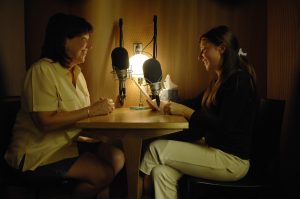
Digital storytelling is the raison d’être at StoryCorps, a non-profit U.S. organization that records, preserves and shares stories; it has recorded more than 60,000 interviews in all 50 states. Through its own documentation, and via its StoryCorps app and StoryCorps.me website, it has also created a global platform for sharing the content. As such, several of the stories on the site are tagged Canada. Photo: Tony Rinaldo
Interactive content offers new multi-sensory ways to document and present our heritage, building on great traditions of oral history to open up a dynamic new discipline of digital storytelling. It’s as much about the here and now as the then and there.
And a Canadian university is among those providing the resources and training that’s needed to take advantage of these digital storytelling opportunities.
At this year’s Heritage Toronto Awards (to be held Monday, October 17), new kinds of media that are changing the way we do history will be described by one of the founding members of the Centre for Oral History and Digital Storytelling (COHSD).
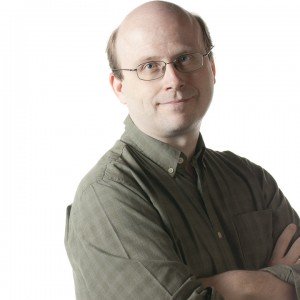
Professor of History at Concordia University Dr. Steven High
Dr. Steven High is a Professor of History at Concordia University, the Centre’s home in Montreal, and a widely published interdisciplinary oral and public historian.
“Digital media and the arts have made the intangible much more tangible in recent years,” he said of the topic to be addressed in the Kilbourn Lecture he’ll deliver at the Awards ceremony. “The result is that people are increasingly seeking a heritage that is interactive, participatory and living.”
Part of the work he and many others at the Centre have done is to collect online resources and deliver both online and in-person training for tools used by digital storytellers, anything from annotation software to video cameras.
Understanding that video can be captured by anything from an iPhone to a GoPro to a virtual reality rig of half-a-dozen or more high-end RED cameras, there are still core competencies to apply when using a digital camera on a historytelling project. The COHSD workshop looks at shot framing and visual composition for example, and it provides insights about interviewing participants and interacting with them while they’re on-camera.
The COHSD makes available freely downloadable software it has developed for transcribing interviews once they’re recorded, often a valuable but tedious process that can lose a sense of person and emotion captured in the actual recorded voice and image.
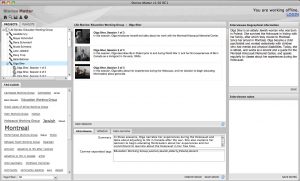
The Canadian Centre for Oral History and Digital Storytelling makes available freely downloadable software it has developed for digital storytellers.
So Stories Matter software lets digital storytellers edit, index and export audio and video clips in a real alternative to paper transcription.
Other digital tools described on the site include location-based services that can be used to create geo-tags of historical interest, including apps like Brightkite, Foursquare or Facebook Places.
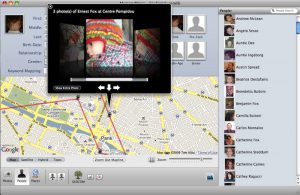
MemoryMiner digital storytelling software lets users connect and share stories, photos and videos based on created place and timelines.
HistoryPin and MemoryMiner are digital storytelling applications used to connect and share stories, photos and videos based on created people, place and timelines. 7Scenes is a mobile storytelling platform for creating location-based tours, games and stories accessed by smartphone.
Significantly, along with the technical tips and suggestions, the COHSD website includes important ethical guidelines that digital storytellers should observe.
Some stories are joyful and celebratory; some are about powerful, emotionally upsetting experiences, the site reminds. The telling, retelling, publication or posting of such stories can make them even more so, much less any planned or accidental reinterpretation of the story.
Collaboration and trust, a commitment to mitigation of harm, and fully informed consent are needed when documenting oral histories and telling digitally mediated stories.
# # #
COHDS will be hosting Oral History Association annual conference in 2018. Hundreds of delegates are expected, and plans call for a showcase of research based at COHDS with a number of oral history-inspired art installations, media displays, performances, excursions and walks.
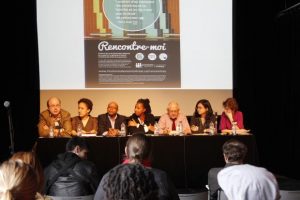
COHDS will be hosting Oral History Association annual conference in 2018. Pictured is the Montreal Life Stories Press Conference.




Pretty fascinating stuff, Lee. I wonder how this evolution will relate, if at all, with the entertainment movement of vlogging. Interesting times ahead, that’s for sure!